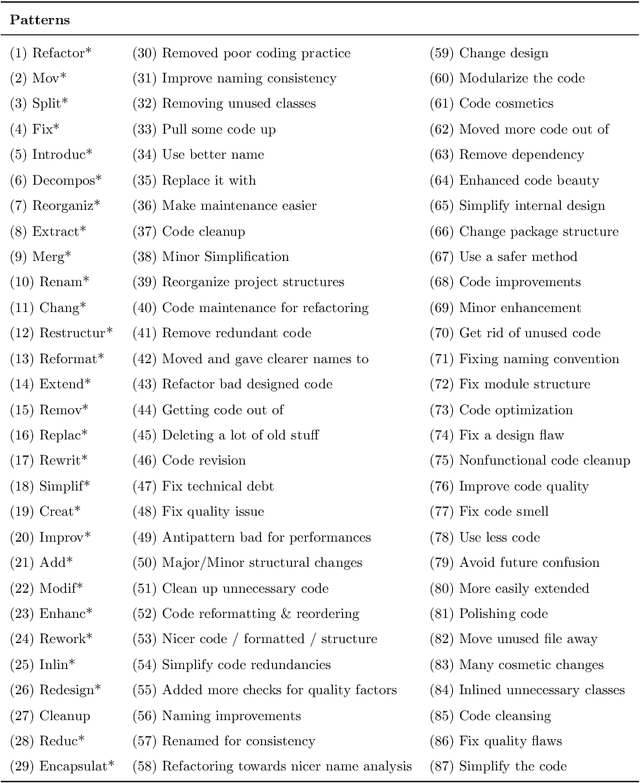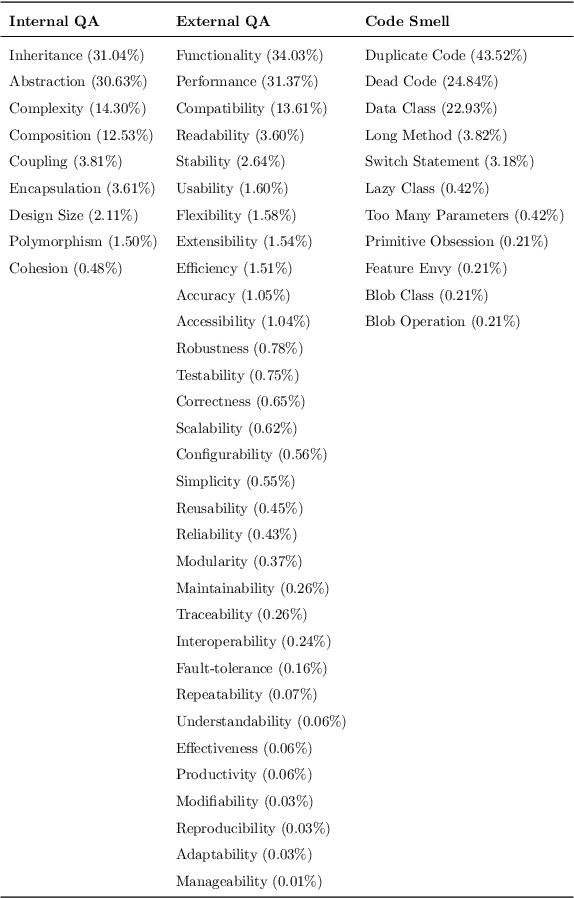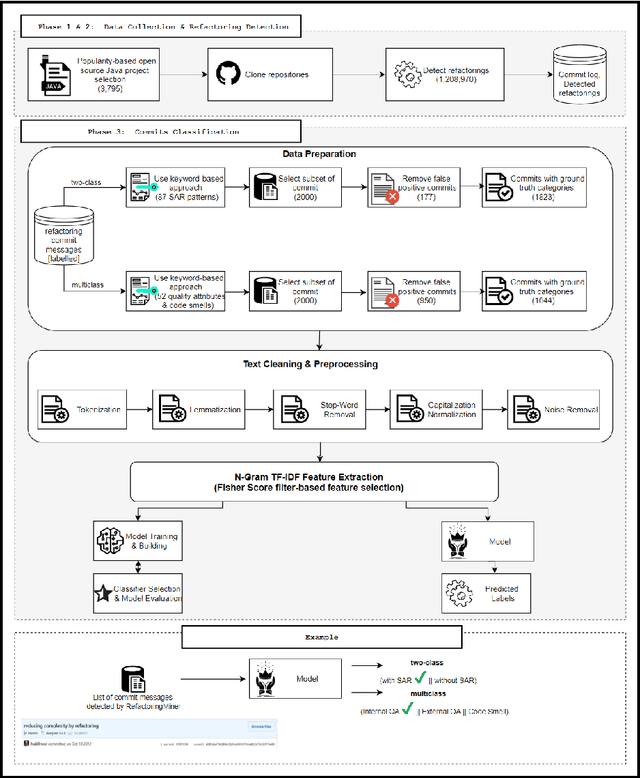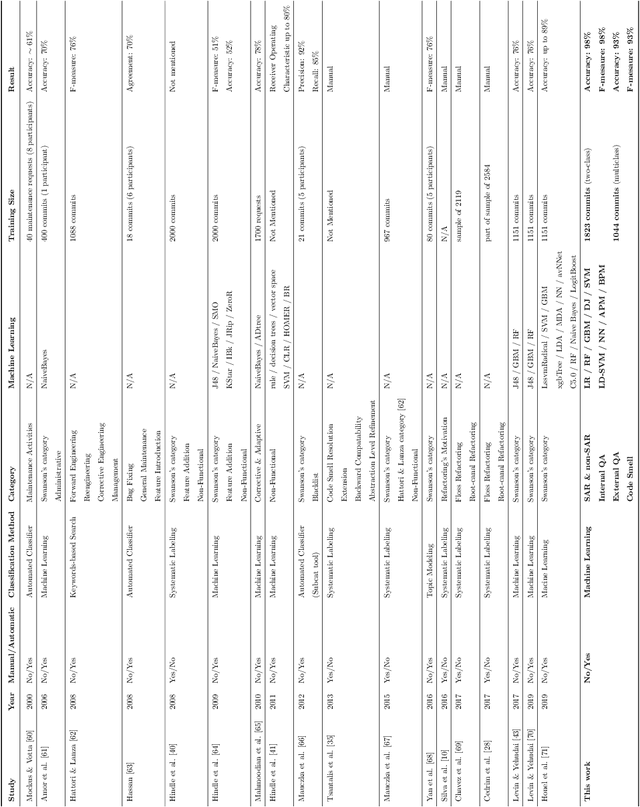Eman Abdullah AlOmar
SCALAR: A Part-of-speech Tagger for Identifiers
Apr 23, 2025Abstract:The paper presents the Source Code Analysis and Lexical Annotation Runtime (SCALAR), a tool specialized for mapping (annotating) source code identifier names to their corresponding part-of-speech tag sequence (grammar pattern). SCALAR's internal model is trained using scikit-learn's GradientBoostingClassifier in conjunction with a manually-curated oracle of identifier names and their grammar patterns. This specializes the tagger to recognize the unique structure of the natural language used by developers to create all types of identifiers (e.g., function names, variable names etc.). SCALAR's output is compared with a previous version of the tagger, as well as a modern off-the-shelf part-of-speech tagger to show how it improves upon other taggers' output for annotating identifiers. The code is available on Github
How We Refactor and How We Document it? On the Use of Supervised Machine Learning Algorithms to Classify Refactoring Documentation
Oct 26, 2020



Abstract:Refactoring is the art of improving the design of a system without altering its external behavior. Refactoring has become a well established and disciplined software engineering practice that has attracted a significant amount of research presuming that refactoring is primarily motivated by the need to improve system structures. However, recent studies have shown that developers may incorporate refactorings in other development activities that go beyond improving the design. Unfortunately, these studies are limited to developer interviews and a reduced set of projects. To cope with the above-mentioned limitations, we aim to better understand what motivates developers to apply refactoring by mining and classifying a large set of 111,884 commits containing refactorings, extracted from 800 Java projects. We trained a multi-class classifier to categorize these commits into 3 categories, namely, Internal QA, External QA, and Code Smell Resolution, along with the traditional BugFix and Functional categories. This classification challenges the original definition of refactoring, being exclusive to improving the design and fixing code smells. Further, to better understand our classification results, we analyzed commit messages to extract textual patterns that developers regularly use to describe their refactorings. The results show that (1) fixing code smells is not the main driver for developers to refactoring their codebases. Refactoring is solicited for a wide variety of reasons, going beyond its traditional definition; (2) the distribution of refactorings differs between production and test files; (3) developers use several patterns to purposefully target refactoring; (4) the textual patterns, extracted from commit messages, provide better coverage for how developers document their refactorings.
Toward the Automatic Classification of Self-Affirmed Refactoring
Sep 19, 2020



Abstract:The concept of Self-Affirmed Refactoring (SAR) was introduced to explore how developers document their refactoring activities in commit messages, i.e., developers' explicit documentation of refactoring operations intentionally introduced during a code change. In our previous study, we have manually identified refactoring patterns and defined three main common quality improvement categories, including internal quality attributes, external quality attributes, and code smells, by only considering refactoring-related commits. However, this approach heavily depends on the manual inspection of commit messages. In this paper, we propose a two-step approach to first identify whether a commit describes developer-related refactoring events, then to classify it according to the refactoring common quality improvement categories. Specifically, we combine the N-Gram TF-IDF feature selection with binary and multiclass classifiers to build a new model to automate the classification of refactorings based on their quality improvement categories. We challenge our model using a total of 2,867 commit messages extracted from well-engineered open-source Java projects. Our findings show that (1) our model is able to accurately classify SAR commits, outperforming the pattern-based and random classifier approaches, and allowing the discovery of 40 more relevant SAR patterns, and (2) our model reaches an F-measure of up to 90% even with a relatively small training dataset.
 Add to Chrome
Add to Chrome Add to Firefox
Add to Firefox Add to Edge
Add to Edge